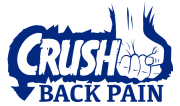Subscribe to the Crush Back Pain Channel
The Most Common Type of Lower Back Pain
Lower back pain is musculoskeletal and mechanical in nature 85-90% of the time. This means that the pain is coming from the musculoskeletal system opposed to something more serious.
2% of the time lower back pain is related to a tumor, infection, or fracture.
10% of the time lower back pain and/or sciatica is related to nerve root compression.
So the overwhelming majority of the time lower back pain is musculoskeletal/mechanical. It’s often referred to as “non-specific” due to the usual inability to diagnose an exact tissue as the pain generator.
Even though the usual run of the mill musculoskeletal/mechanical lower back pain is referred to as “non-specific” the majority of the time the pain is related to one of three structures. The disc, facet joint, and SI joint.
You can’t always tell what structure is the source of pain from an MRI or X-ray
Incidental findings and false positives are very common in the lower back. It’s difficult to blame pain on structural findings seen on imaging studies of the spine. Imaging of the spine in people with and without lower back pain is very similar. Basically herniated discs, degenerative disc disease, degenerative joint disease, facet joint arthritis, bulging discs, etc. are found just as frequently in people WITHOUT lower back pain compared to people with lower back pain. Hence the fallacy of putting too much stock in imaging of the spine. People always want to know what tissue is painful. In most people with lower back pain the disc, facet joints, or SI joint will be the pain generator.
While it’s helpful to have a good idea of what the likely pain generator is it’s more important to determine what is causing one or more of these structures to become painful
For these structures to become painful there has to be repetitive movements, positioning, movement patterns, and activities that cause tissue micro-injury and pain. Identifying whatever biomechanical variables are causing the discs, facets, or SI joint to become painful and correcting it is the foundation and key to long-term lower back pain relief. Once it’s determined what is causing tissue micro-trauma and pain it can be corrected. Whatever tissue is painful, regardless of what it is needs a chance to heal and become less irritable and inflamed. As the inflammation, irritability, and pain decrease the tissues need movement and exercise.
The proper movement and exercise work promotes healing
In addition the tissues can be strengthened and made better able to tolerate and withstand activity. Discs, facet joints, and SI joints are living tissue. They will respond to forces and exercise by becoming stronger and healthier. A healthy lower back has strong, resilient tissues and is able to tolerate and withstand a wide variety of activities. The only way to get the tissues of the lower back to this point is with exercise. This is the long-term solution to lower back pain, and the only proven way to prevent the incidence of future recurrence.


